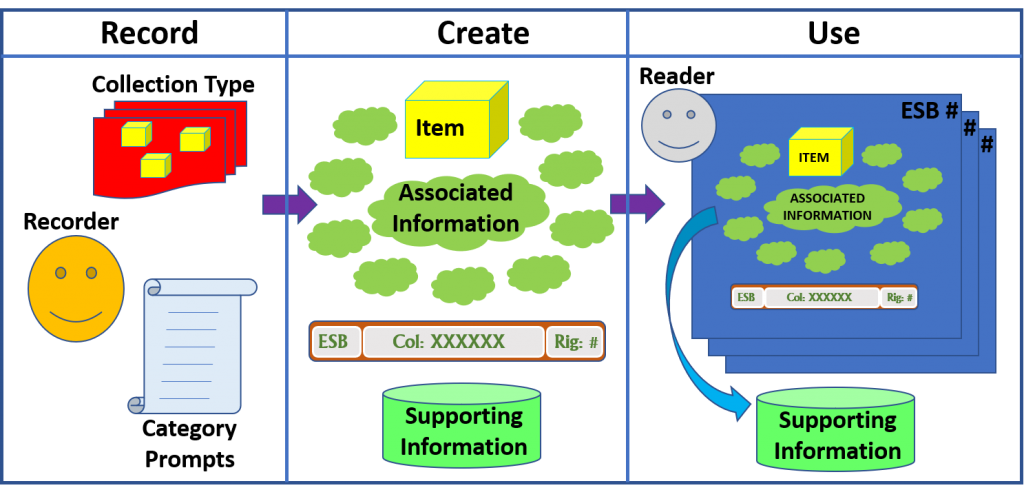The investigation described in previous entries used Books as the type of collection to explore the concept of the electronic story board. It showed that the collected material on an ESB tends to expand the reader’s attention beyond the particular item concerned; and that the set of information that the reader brings to mind when thinking about the item concerned becomes an entity in its own right when assembled together on an ESB. It also showed that a reader often explores the item itself, and some of these additional facets, when looking at an ESB.
If this is the case for books, it seems likely that the same effect can be achieved for other types of items – Mementos, Photos, Letters, Files – perhaps even Music. Mementos would seem to be particularly amenable to this kind of treatment since they are likely to evoke even more and stronger memories and feelings than Books. However, it must be remembered that, in the investigation using Books just completed, a particular set of categories was identified to help the owner bring to mind the related information; and it may well be that different sets of categories may be required for other types of items.
If ESBs can be used for different types of collections, each with a different set of category prompts, it may be worthwhile creating a model of all the key components with standardised terminology. I propose the following:
- Collection Type (books, mementos, photos, letters, files etc.)
- Recorder (the person who is identifying the associated information)
- Category Prompts (the set of categories used to prompt the Recorder to identify associated information)
- Item (the particular item within a collection that is the main focus of a particular ESB)
- Associated Information (the information generated by a Recorder to surround a particular Item)
- Rig (a standard layout for the way Items and their Associated Information are arranged on a collection of ESBs)
- Supporting Information (additional material related to Items and to Associated Information, which can be accessed by links from an ESB)
- ESB (a numbered display of an item and its Associated Information, with links to their Supporting Information)
- Reader (the person who looks at an ESB and who may also access its links – this may be a different individual from the Recorder)
The diagram below illustrates how these components might fit together.
